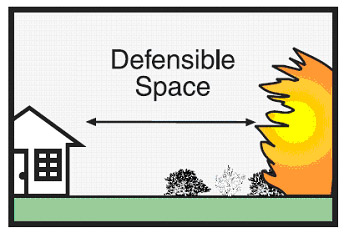The time to get your property insurance is BEFORE the fire happens!!!! Insurance companies often create “moratoriums” once a wildfire starts and new policies and coverage increases are not allowed until after the fire is contained and the “moratorium” lifted.
FOR IMMEDIATE RELEASE
June 10, 2020
Contact: Melissa Gutierrez
Email: Melissa.gutierrez@state.nm.us
SUPERINTENDENT OF INSURANCE REMINDS NEW MEXICANS
TO PREPARE FOR WILDFIRES
New Mexico Superintendent of Insurance Russell Toal is reminding New Mexicans that the wildfire
season is upon us. We all need to do our part to minimize the risk of wildfires. This is the time to make
sure your insurance is sufficient and up-to-date, to prepare your property, practice fire prevention, and
have a plan if evacuation is necessary.
INSURANCE
Your homeowners’ or renter’s insurance policy should be reviewed now to ensure that you have adequate
coverage for your property and personal belongings. You can use the NAIC’s Consumer’s Guide to
Home Insurance or Guide to Renter’s Insurance to help make decisions about which policy works best
for you. We also encourage you to contact your insurance broker or agent if you have any questions or
need to update your policy.
Filing a claim and replacing all belongings will be easier if you have a home inventory. We encourage you
to take photos or a video of each room and of important or expensive items, as this will help your insurer
quickly process a claim. You can save these videos or photos to the cloud for easy retrieval.
DEFENSIBLE SPACE AND FIRE-RESISTANT MATERIALS
Your goal now, before a fire happens, is to make your home or business and the surrounding area more
resistant to catching fire and burning. This means reducing the amount of material that can burn easily
in and around your home or business by clearing away debris and other flammable materials, moving
firewood away from your home and any other structures and using fire-resistant materials for
landscaping and construction.
Practice fire prevention
– Use caution any time you use fire. Dispose of charcoal briquettes and fireplace ashes properly, never
leave any outdoor fire unattended and make sure that outdoor fires are fully extinguished and cold to
the touch before leaving the area.
– Do not use welders or any equipment that creates sparks outside on dry, windy days.
– Do not park vehicles in tall, dry grass if a fire weather watch or fire weather/red flag warning has been
issued. Exhaust systems are very hot and can ignite dry grass.
– Store combustible or flammable materials in approved safety containers away from the house.
– Keep a gas grill and propane tank at least 15 feet away from any structure. Clear a 15-foot area around
the grill. Do not use the grill during potentially dangerous fire weather conditions.
– Always have a fire extinguisher and functional water hose nearby.
– Learn how you and your family can prevent a wildfire by using fire and equipment responsibly at
www.SmokeyBear.com.
EMERGENCY EVACUATION
To ensure you will be able to act quickly should you need to evacuate, you need to plan. Prepare and
regularly review your evacuation plan, share it with family and friends, and be sure to have emergency
contact numbers readily available to you.
Evacuation routes; plan your transportation and a place to stay.
– Know your community’s local evacuation plan and identify several escape routes from your location
in case roads are blocked. Include plans to evacuate people with disabilities and others with access or
functional needs, as well as pets, service animals, and livestock.
– If you will evacuate by car, keep your car fueled and in good condition.
– If you will need to share transportation, make arrangements now. If you will need to use public
transportation, including paratransit, contact your local government emergency management agency
to ask how an evacuation will work, how you will get current information during an evacuation, the
location of staging areas, and other information.
– If you need to relocate for an extended period of time, identify a place away from home where you
could go if you had to leave. Consider family or friends who live outside of the local area.
– If you expect to go to a shelter after evacuating, download the American Red Cross Shelter Finder
App at www.redcross.org/mobile-apps/shelter-finder-app. This app displays a map of all open
American Red Cross shelters and provides the capacity and the current population of each shelter. You
can also text SHELTER + your ZIP code to 43362 (4FEMA) to find the nearest shelter in your area.
– Have a Battery-Powered Weather Radio available. If electricity is out and cell towers are down, this
will be your only way to know what is happening.
Essential items for an emergency supply kit:
Cash: If the power goes out, credit cards won’t work. Keep some cash on hand for replenishing
supplies.
Medications: Pharmacies might be closed, and hospitals could be overwhelmed. Keep a
backup supply (at least several days’ worth) of important medications like blood
pressure medicine and insulin.
A Gallon of Water for Every Family Member and Pet: Widespread power outages could
make tap water unsafe to drink.
Important Documents: Social Security cards, passports, birth certificates, driver’s licenses, and more could all be lost or destroyed in a fire. Keep copies of these documents in a fireproof
container and make it part of your emergency supply kit. Include a copy of your insurance policy
so that you can quickly file a claim once the danger has passed.
A Change of Clothes: If you are away from your home for a few days, you will want to have a
change of clothes.
Always keep a good pair of shoes and a flashlight near your bed and handy in the event of a sudden
evacuation at night.
Please visit “Ready, Set, Go!” for additional information and resources. Taking action now can prevent a
catastrophe later!





